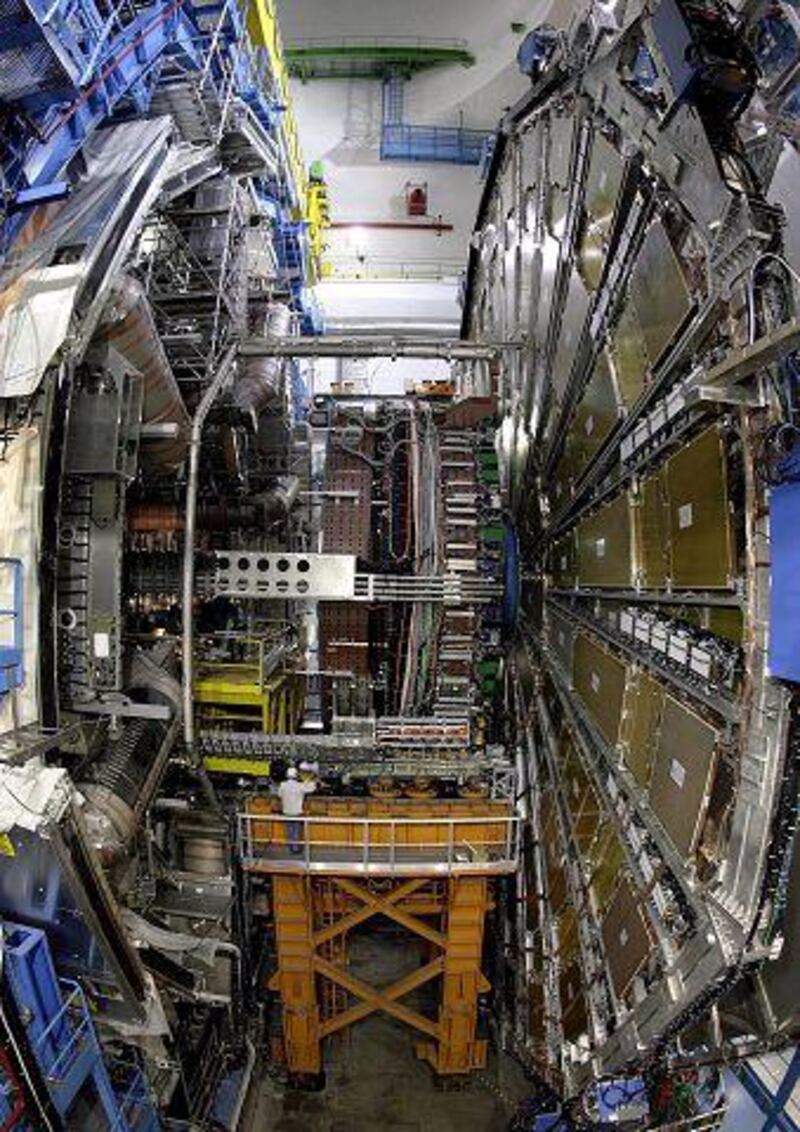So finally it is about to happen. After years of disappointment, delay and mishap, the world's most powerful particle accelerator, the Large Hadron Collider (LHC), is about to get down to business. Later this week, the 27km-long circular leviathan lying deep below the Franco-Swiss border will fire beams of subatomic particles at one another in its first step towards solving some of the deepest mysteries in science. Smashing into each other with a violence not seen since the Big Bang itself, the particles are expected to reveal clues to the so-called Theory of Everything, which eluded even Einstein.
If all goes to plan, the LHC should give theorists two major breakthroughs. The first is the discovery of the so-called Higgs Vector Boson, a particle predicted almost 50 years ago by several theorists, among them Peter Higgs of Edinburgh University. Put simply, the Higgs is the final piece of the impressively comprehensive (if boringly named) Standard Model of particle physics, which encompasses all the known particles and forces of nature, with the sole exception of gravity. The equations of the Standard Model describe everything from the action of bar magnets to the power of nuclear weapons. Embarrassingly, however, they cannot explain why bathroom scales give different readings when we stand on them. That is, they cannot account for why anything has mass.
To do that, theorists invented the Higgs, which interacts with all the others, imbuing them with heft. Yet despite its key role, the Higgs has refused to reveal itself in any experiment. That may be because, until now, physicists have not had an accelerator packing a big enough punch to force the Higgs out of hiding. In the LHC, they almost certainly do - and if it does not turn up soon, theorists are going to have to look to other ways to explain the behaviour of bathroom scales.
The other major target for the LHC is the identification of a phenomenon called supersymmetry. Many theorists see this as a key component of any putative Theory of Everything, the rather overblown name given to the long-sought set of equations that describe all the particles in the universe, and all the forces that act on them - this time including gravity. In simple terms, supersymmetry promises to unify the two basic types of particles - those that make up matter and those that carry forces. Any would-be Theory of Everything needs some way of bridging this divide, and it is a pretty huge one. After all, protons - the charged, heavy particles that make up atoms - do not seem to have a lot in common with photons, the uncharged, massless particles that transmit electromagnetic forces. Supersymmetry reveals their underlying unity, just as the concept of being human unifies those otherwise radically different entities we call men and women.
This unity comes at a price, however. Every known particle should have a supersymmetric partner - thus doubling the already huge numbers of subatomic particles. And, as with the Higgs particle, there has, so far, been little hard evidence to support the idea of supersymmetry - and theorists are looking to the LHC to provide it. Yet among the thousands of scientists and engineers now preparing the LHC for its first real experiments, more than a few are hoping to do more than just tie up these loose ends. They would like to see the LHC throw up something really astonishing, and there is an outside chance they might just get their wish. According to some theorists, the LHC might just have enough power to reveal the hidden dimensions of our universe.
The idea that there might be more to our cosmos than just the standard three dimensions of space (width, height, breadth) plus one of time dates back to the time of Einstein. Shortly after devising his radical new theory of gravity, known as General Relativity, Einstein tried to go further, in search for the Theory of Everything. At the time, this meant unifying gravity with electromagnetism - the only other cosmic force then known.
While struggling to find the right equations, in 1919 he learnt that a German mathematician, Theodor Kaluza, had succeeded in unifying the two forces. To do it, however, Kaluza had had to accept the "crazy" idea that our four-dimensional universe must possess an invisible fifth dimension. Einstein liked the idea, but like other theorists struggled to see how it could be true. For decades, Kaluza's odd discovery was viewed as a curiosity. Then, in the 1970s, theorists searching for the Theory of Everything rediscovered the idea. As they now had to unify far more particles and forces, theorists needed many more dimensions - and they currently invoke no fewer than six. In other words, we may be living in a universe of 10 dimensions, six of which are, for some reason, invisible.
But that could be about to change. Most theorists believe that the six hidden dimensions of the universe are simply curled up too small to see. Yet according to some calculations, there is a chance at least some of the dimensions may reveal themselves at the incredibly high energies accessible to the LHC. Quite how they will reveal themselves remains unclear. One possibility is that particles colliding within the LHC may possess slightly less energy than expected - because some of it has "leaked" into the extra dimensions. Another possibility is that particles from our four-dimensional universe can slip into the hidden dimensions, creating new, far heavier, particles that the LHC can detect.
What is clear is that when the huge US$3.9 billion (Dh14bn) machine fires up later this week, scientists will be venturing into realms unexplored since the Big Bang. And we should be prepared for some very big surprises. Robert Matthews is Visiting Reader in Science at Aston University, Birmingham, England






